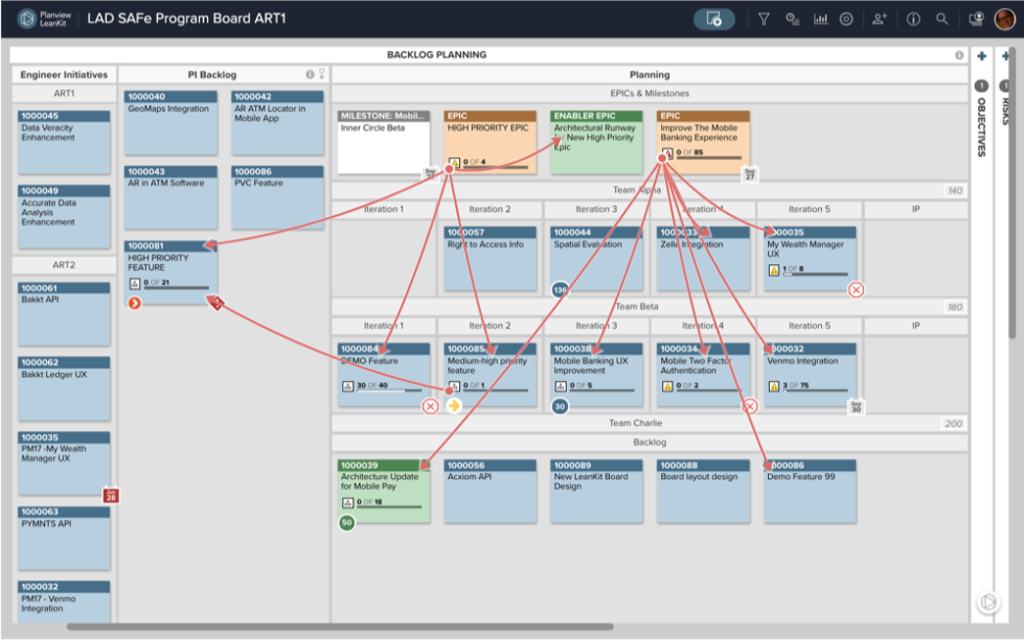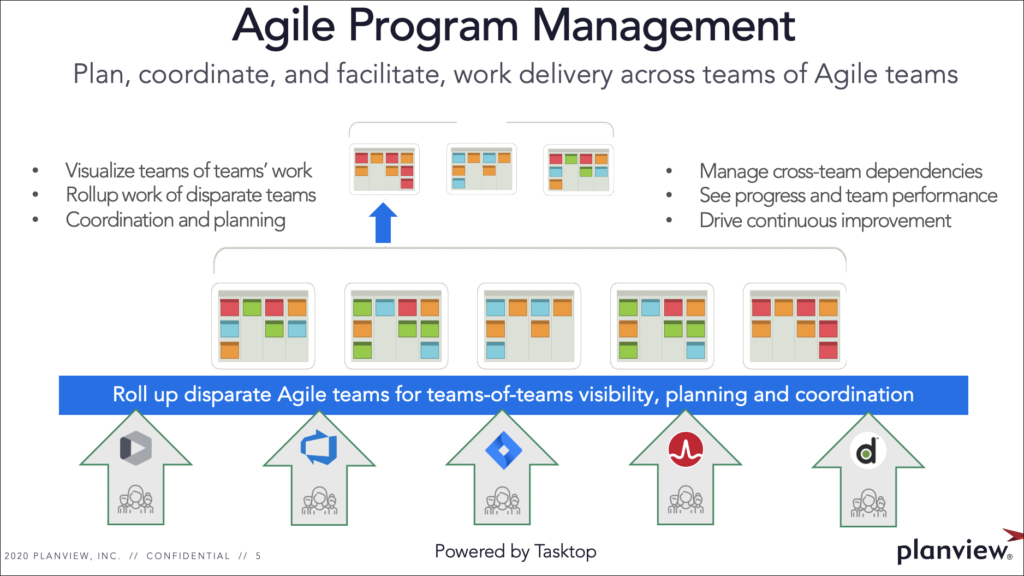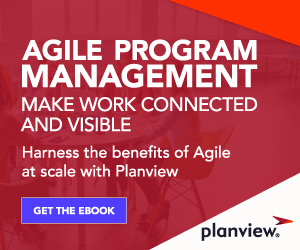
So, you’re scaling Agile within your organization. How’s it going? Are you running into challenges along the way? If so, you’re not alone. Scaling Agile can be complicated and every organization is different. We’re here to help. I recently hosted a series of virtual discussions complete with product demos that outline how establishing Agile Program Management can help organizations tackle the biggest challenges with scaling Agile. In this four-part blog series, I will share highlights from each discussion offering ways to improve your approach to scaling Agile. This blog is dedicated to discussing Part 1: “Taming the Agile Chaos: Who’s Who in Your Zoo”. I will focus on two important concepts from the webinar: Visibility into team deliverables and Agile integrations (because your teams are likely using and happy with an existing tool).
If this sparks your interest, here’s easy access to the complete Agile Program Management 4-Part discussion and demo series. I hope you find the content helpful.
Visibility is the Heart of any Agile Program
If there is a common theme when it comes to Agile at scale challenges, it’s visibility. We’ve heard this repeatedly from customers and prospects; without proper visibility, organizations cannot make the appropriate business decisions and will ultimately struggle to deliver value.
How to Achieve Visibility Across Agile Teams with Agile Program Management
Set up team-level boards
No matter the Agile methodology your teams are using (Kanban, Scrum, or Scrumban), visibility is possible. First, you need a tool that allows team members to prioritize and deliver work. Planview AgilePlace, as featured in the demo of the webinar, is the first step to establishing an effective Agile program. Start managing your Agile program with a single team or multiple teams leveraging Planview AgilePlace, an enterprise Kanban solution. It’s an easy to use, customizable Kanban solution that gives teams a place to plan, visualize, manage work in progress, and deliver value.

Set up program-level board
Once individual teams are up and running and delivering work, you must take it a step further and connect teams of teams (or Agile Release Train) work into a single program-level board. Planview AgilePlace allows you to connect epics and features from the team-level boards to a program-level board. Planview AgilePlace has a customizable parent to child hierarchy that can be leveraged across epics, features, and stories. The program-level board enables stakeholders including executives, product owners, product managers, Release Train Engineers (RTE), team members, and others to fully understand how work across different teams is aligned to business objectives. Stakeholders can visualize and start a dialog around risks, work in progress, blockers, and more. In addition, if change occurs and teams need to pivot their strategy quickly, they can help make suggestions around priorities to take on new work and minimize negative effects to the business – ultimately improving business agility and the ability to respond to change.
Below is an example of a program-level view in Planview AgilePlace.

Who sets up the different boards in Planview AgilePlace?
Often, Agile coaches and Release Train Engineers (or other appointed stakeholders) within your organization create the program-level view which can then be iterated upon as learnings take place and feedback from the teams are collected. At the team level, board set up is often managed by the team. As teams build out the stories (on their Planview AgilePlace board or in another work management tool), those Story cards are connected to the feature card on the program board.
Agile Integrations: Connecting Agile Team Tool Information
When it comes to Agile practices, it is important to support different ways of working and promote team autonomy. What if your teams use team tools like Jira, Planview AgilePlace, Rally, VersionOne, or Azure DevOps? How can you achieve this level of visibility from disparate tools? This is another common challenge, especially in large enterprise organizations. The answer again is Planview AgilePlace! With Planview AgilePlace, it’s possible to establish an effective Agile program and visualize work across your different team tools at a program level. With Planview Agile Integrations, you can choose to integrate with other team tools (like the ones listed above) to create a program-level view of work delivery. The following diagram is a visual representation of how it works.

For example, if your Agile teams are working in Jira to deliver work, the Planview Agile Integration capability allows you to create a bi-direction integration between Planview AgilePlace and (multiple) Jira instances. Card/task information such as start dates, blockers, and risks in Jira are connected to the program-level board in Planview AgilePlace. This gives stakeholders the visibility into information they need to make better business decisions and deliver value to the customer faster.
For more information about Planview Agile Integrations, check out the datasheet.
A common use case:
Use Case: A software development Agile Release Train (ART) consists of 10 teams with 6 members on each team. The software development team uses Scrumban for continuous delivery, as well as different team tools to deliver work across the different teams.
The Challenge: Leaders need to visualize and understand what each team is working on to ensure effort aligns with the company’s strategic goals centered on customer value and manage cross-team dependencies.
The Solution: Planview AgilePlace and Planview Agile Integrations allow teams to work in their tool of choice (Jira and ADO, in this case). RTEs, Agile Coaches, Program Managers, Product Managers, Stakeholders, Dev Managers, and other business owners can leverage Planview AgilePlace program boards, while each team manages their workflow in their preferred tool of choice. Everyone has visibility into their individual team work as well as the work across the ART. They get easy access to work in progress, blockers, and risks across teams for advanced visibility and better decision making.
As you can see visibility into Agile teams of teams and ARTs is completely possible. To see all of this in action, I encourage you to register to listen to the discussion and demo “Taming the Agile Chaos: Who’s Who in Your Zoo”. Stay tuned to the Planview blog as we dive into the next demo discussion, Agile Planning – Let’s Plan the Plan and discuss how to do PI or Quarterly Planning more effectively.


![Agile Program Management: How to Increase Agile Scaling Success [Video]](https://blog.planview.com/wp-content/uploads/2020/09/Apm-video.gif)

